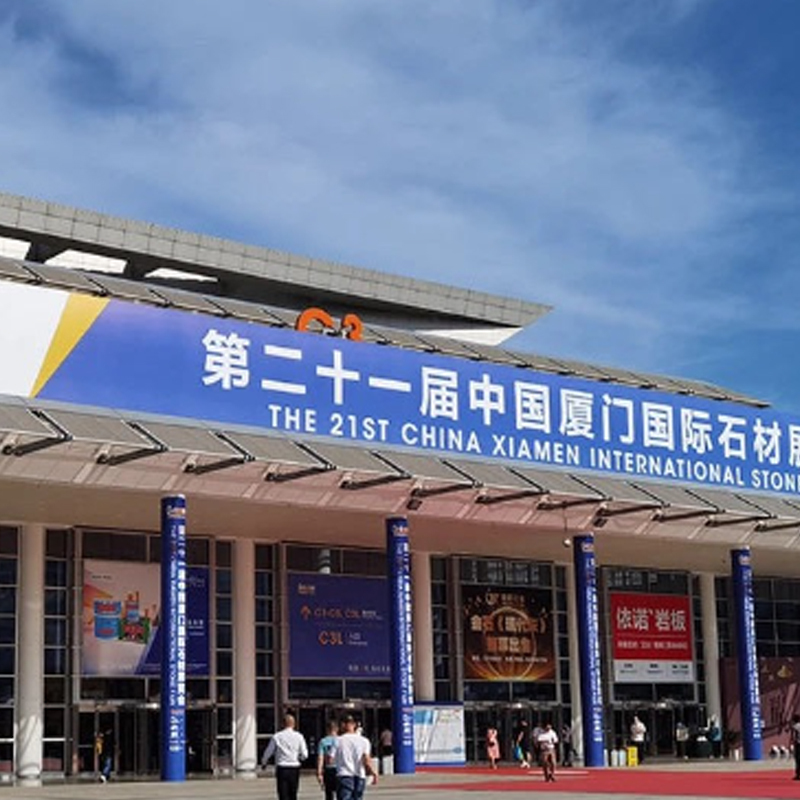In the ever-evolving landscape of global trade, China continues to assert its dominance as the world’s manufacturing powerhouse. Despite rising competition from Southeast Asian nations, Chinese wholesale products maintain a competitive edge that’s hard to match. This article delves into the reasons behind China’s enduring supremacy in manufacturing and explores why businesses worldwide still prefer Chinese suppliers over their Southeast Asian counterparts.
Whether you’re a seasoned importer or just starting to explore international sourcing options, understanding the nuances of China’s manufacturing advantages is crucial for making informed business decisions. Read on to discover how China’s unique blend of scale, technology, and expertise creates unparalleled value in the global marketplace.
Key Takeaways: China’s Manufacturing Supremacy at a Glance
- Unmatched production capacity and economies of scale
- Advanced technological infrastructure and innovation
- Extensive supply chain networks and logistics efficiency
- Skilled workforce with specialized expertise
- Government support and favorable business policies
- Superior quality control systems and standards

Why China’s Wholesale Products Outshine Southeast Asian Competitors (1)
How Does China’s Manufacturing Capacity Compare to Southeast Asia?
When it comes to sheer production capacity, China stands head and shoulders above its Southeast Asian competitors. The country’s vast network of factories, spanning diverse industries, allows for an unparalleled scale of production. This economic scale benefit translates into lower per-unit costs, making Chinese products more competitive in the global market.
Consider this: China’s manufacturing output in 2020 was approximately $3.854 trillion, more than the combined output of the next four largest manufacturing countries. In contrast, the entire ASEAN region’s manufacturing output was around $1.1 trillion in the same year. This staggering difference in production capacity means that China can handle larger orders more efficiently, often with shorter lead times.
“China’s manufacturing prowess isn’t just about size – it’s about the ability to scale up or down quickly to meet market demands. This flexibility is a key advantage that many Southeast Asian countries are still developing.” – Industry Expert
What Technological Advantages Does China Hold Over Its Southeast Asian Counterparts?
China’s technological edge in manufacturing is a result of decades of investment in research and development. The country has rapidly embraced Industry 4.0 technologies, including artificial intelligence, the Internet of Things, and advanced robotics. This technological sophistication allows Chinese factories to produce higher-quality goods more efficiently.
For instance, China leads the world in the adoption of industrial robots, with a density of 246 units per 10,000 employees in 2020, compared to much lower figures in most Southeast Asian countries. This technological advantage extends to areas such as:
- Automated quality control systems
- Smart inventory management
- Predictive maintenance
- Advanced data analytics for production optimization
These technological capabilities not only enhance productivity but also contribute to better quality assurance systems, giving Chinese manufacturers a significant edge in producing consistent, high-quality products at scale.
How Does China’s Supply Chain Infrastructure Compare to Southeast Asia?
China’s supremacy in manufacturing is heavily supported by its robust and well-developed supply chain infrastructure. The country boasts an intricate network of suppliers, manufacturers, and logistics providers that work in harmony to ensure efficient production and delivery. This supply chain superiority is a key factor that sets China apart from its Southeast Asian competitors.
China’s logistics infrastructure is particularly noteworthy. The country has invested heavily in:
- High-speed rail networks
- Modern seaports and airports
- Efficient road transportation systems
These investments have resulted in faster delivery speeds and more reliable shipping times, which are crucial for businesses operating in today’s fast-paced global market. In comparison, many Southeast Asian countries are still in the process of developing their logistics infrastructure, which can lead to longer lead times and less predictable delivery schedules.
What Cost-Benefit Advantages Do Chinese Manufacturers Offer?
While labor costs in China have risen in recent years, the country still offers a compelling cost-benefit analysis for businesses sourcing wholesale products. The key lies in China’s ability to offset higher labor costs with increased productivity and efficiency. Chinese manufacturers leverage their technological advantages and economies of scale to maintain competitive pricing strategies without compromising on quality.
Consider the following factors that contribute to China’s cost-effectiveness:
| Factor | China’s Advantage |
|---|---|
| Economies of Scale | Lower per-unit costs due to large production volumes |
| Automation | Reduced labor costs and increased efficiency |
| Supply Chain Integration | Reduced logistics and sourcing costs |
| Government Incentives | Tax breaks and subsidies for certain industries |
These factors combine to create a value proposition that’s hard to match, even as some Southeast Asian countries offer lower labor costs. For businesses looking to optimize their sourcing strategies, Chinese factories continue to be a good support, offering a balance of quality, efficiency, and cost-effectiveness.

How Do Product Quality Differentials Play Out Between China and Southeast Asia?
Product quality is a critical factor in any sourcing decision, and it’s an area where China has made significant strides. The country’s focus on quality assurance systems and continuous improvement has led to notable product quality differentials when compared to many Southeast Asian manufacturers.
Key aspects of China’s quality advantage include:
- Stringent quality control processes
- Advanced testing facilities
- Experienced quality assurance personnel
- Adherence to international standards and certifications
While some Southeast Asian countries are catching up, China’s long-standing experience in producing for global markets has resulted in a deep understanding of international quality standards. This expertise, combined with technological advancements, allows Chinese manufacturers to consistently produce high-quality goods at scale.
“The quality gap between Chinese and Southeast Asian products is narrowing in some sectors, but China’s overall quality management systems and expertise still give it a significant edge in most industries.” – Quality Control Expert
What Makes China’s Production Efficiency Superior?
China’s production efficiency is a result of several interlinked factors that create a highly optimized manufacturing ecosystem. This efficiency is a key reason why Chinese factories remain a good support for businesses seeking reliable and fast production capabilities.
Some of the elements contributing to China’s superior production efficiency include:
- Workforce Expertise: Decades of manufacturing experience have created a skilled labor force familiar with various production processes and international standards.
- Advanced Machinery: Continuous investment in state-of-the-art equipment enhances productivity and precision.
- Lean Manufacturing Practices: Widespread adoption of efficiency-boosting methodologies like Six Sigma and Kaizen.
- Integrated Supply Chains: Close proximity of suppliers and manufacturers reduces lead times and improves coordination.
- 24/7 Production Capability: Many Chinese factories can operate round the clock, significantly reducing production times.
This combination of factors allows Chinese manufacturers to achieve higher output rates, shorter production cycles, and greater flexibility in meeting customer demands compared to many of their Southeast Asian counterparts.
How Do China’s Export Capabilities Compare to Emerging Southeast Asian Markets?
China’s export capabilities remain unmatched in the region, despite the rise of emerging markets in Southeast Asia. The country’s robust infrastructure, streamlined customs processes, and vast experience in international trade give it a significant advantage in facilitating exports efficiently and at scale.
Key aspects of China’s export prowess include:
- Extensive network of ports and airports capable of handling large volumes of cargo
- Efficient customs clearance processes and familiarity with international trade regulations
- Strong relationships with global shipping companies and freight forwarders
- Advanced tracking and logistics management systems
- Ability to handle a wide range of product types and quantities
While some Southeast Asian countries are improving their export infrastructure, they still lag behind China in terms of capacity, efficiency, and global reach. For businesses looking to source products for international markets, Chinese suppliers often provide a more seamless and reliable export experience.

Why Does China Continue to Dominate in Market Leadership?
China’s continued market leadership in global manufacturing is not just a result of its production capabilities, but also its ability to adapt to changing market demands and technological trends. The country’s dominance is reinforced by several factors:
- Innovation and R&D: Significant investments in research and development keep Chinese manufacturers at the forefront of technological advancements.
- Industry Specialization: Many regions in China have developed specialized clusters for specific industries, creating centers of excellence.
- Business Ecosystem: A comprehensive network of suppliers, manufacturers, and service providers facilitates efficient operations and quick problem-solving.
- Government Support: Favorable policies and incentives encourage industrial growth and competitiveness.
- Global Brand Partnerships: Long-standing relationships with international brands provide valuable insights and steady demand.
These factors combine to create a robust and dynamic manufacturing sector that continues to attract global businesses. While Southeast Asian countries are making strides in certain areas, China’s comprehensive strengths across multiple dimensions maintain its position as the go-to destination for many sourcing needs.
What Sourcing Strategies Make China a Preferred Choice Over Southeast Asia?
When it comes to sourcing strategies, China offers a unique set of advantages that continue to make it a preferred choice for many businesses over Southeast Asian alternatives. These strategies leverage China’s strengths to provide comprehensive solutions for diverse sourcing needs.
Key sourcing strategies that favor China include:
- One-Stop Sourcing: China’s vast industrial base allows businesses to source multiple products or components from a single location, simplifying supply chain management.
- Customization Flexibility: Chinese manufacturers often offer greater flexibility in product customization, thanks to their advanced technological capabilities and experienced workforce.
- Scalability: The ability to quickly scale production up or down to meet changing demand is a significant advantage of sourcing from China.
- Quality-to-Price Ratio: While not always the cheapest option, China often offers the best balance of quality and price, especially for mid-range to high-end products.
- Intellectual Property Protection: China has made significant strides in IP protection, with many manufacturers now offering robust measures to safeguard clients’ designs and innovations.
These strategies highlight why Chinese factories continue to be a good support for businesses looking to optimize their sourcing processes. For companies seeking to navigate the complexities of international sourcing, partnering with experienced agencies like BuyFromChinaDirect can provide valuable insights and support in developing effective sourcing strategies tailored to their specific needs.
How Does China’s Trade Dominance Impact Global Sourcing Decisions?
China’s trade dominance has a profound impact on global sourcing decisions, influencing everything from pricing strategies to supply chain configurations. The country’s position as the world’s largest exporter creates a gravitational pull that affects businesses across industries and geographies.
Key impacts of China’s trade dominance include:
- Price Benchmarking: Chinese product prices often set global benchmarks, influencing pricing strategies worldwide.
- Supply Chain Integration: Many global supply chains are deeply integrated with Chinese manufacturers, making it challenging to completely shift sourcing to other regions.
- Market Access: Sourcing from China can provide insights and potential access to the vast Chinese domestic market.
- Innovation Trends: Chinese manufacturing trends often drive global innovation in production processes and product development.
- Risk Diversification: While some businesses seek to diversify their sourcing to reduce reliance on China, many find it necessary to maintain at least some Chinese suppliers in their portfolio.
Understanding these impacts is crucial for businesses developing their sourcing strategies. While Southeast Asian countries offer compelling alternatives in some areas, China’s overall trade dominance continues to make it a critical player in global sourcing decisions.
Conclusion: Why China Remains the Manufacturing Powerhouse
As we’ve explored throughout this article, China’s manufacturing advantages continue to set it apart in the global supply chain race. Despite rising competition from Southeast Asian nations, China’s unique combination of scale, technology, expertise, and infrastructure maintains its position as the world’s manufacturing powerhouse.
Key factors contributing to China’s enduring dominance include:
- Unmatched production capacity and economies of scale
- Technological superiority and innovation
- Robust and efficient supply chain infrastructure
- Competitive cost-benefit ratios
- Superior product quality and quality assurance systems
- Unparalleled production efficiency
- Advanced export capabilities
- Continued market leadership and adaptability
- Flexible and comprehensive sourcing strategies
- Global trade dominance and influence
While Southeast Asian countries are making strides in developing their manufacturing capabilities, China’s comprehensive strengths across multiple dimensions continue to make it an attractive option for businesses worldwide. Chinese factories remain a good support for companies looking to optimize their sourcing strategies and maintain a competitive edge in the global marketplace.
For businesses navigating the complexities of international sourcing, partnering with experienced agencies like BuyFromChinaDirect can provide valuable support in developing effective strategies tailored to specific needs. By leveraging China’s manufacturing advantages while staying attuned to global market trends, companies can position themselves for success in an ever-evolving business landscape.
As the global manufacturing scene continues to evolve, China’s role as a central player in international trade and production is likely to persist, driven by its ability to adapt, innovate, and deliver value across a wide spectrum of industries and product categories.





























